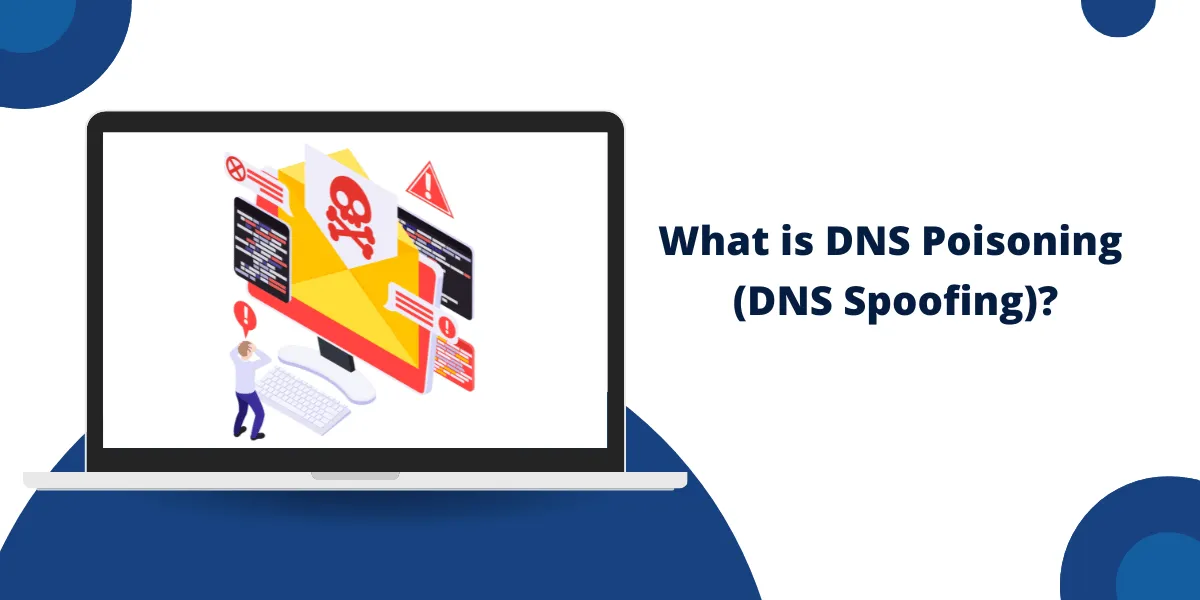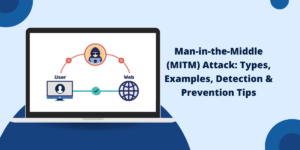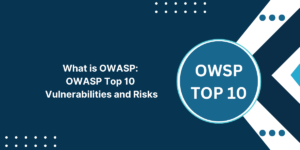What Does DNS Poisoning Mean?
The Domain Name System (DNS) is a fundamental technology that translates domain names into IP addresses, connecting users to websites and internet services. However, like any system, DNS is vulnerable to attacks and manipulation. One such attack vector is known as DNS poisoning or DNS spoofing.
DNS poisoning exploits vulnerabilities in the DNS architecture and lookup process. By intercepting DNS queries and injecting false responses, attackers can trick users into connecting to malicious sites, impersonating legitimate destinations. This enables a range of malicious activities, from malware distribution to data theft.
While DNS providers have added security extensions like DNSSEC to sign records cryptographically, DNS poisoning remains a threat. Attackers are constantly probing for weaknesses that allow them to bypass safeguards. Organizations must understand how DNS poisoning works and implement layered defenses to detect and block attacks targeting the DNS infrastructure.
Key Takeaways
- DNS poisoning, also known as DNS spoofing, is an attack that manipulates DNS records to redirect traffic to malicious sites.
- It exploits vulnerabilities in the DNS lookup process where DNS requests can be intercepted and responded to with false information.
- Attackers can use DNS poisoning to spread malware, steal credentials, or carry out phishing attacks by redirecting users to malicious sites and impersonating legitimate ones.
- DNSSEC cryptographically signs records to prevent tampering, while DNS over HTTPS and DNS over TLS encrypt connections to prevent snooping.
- Organizations can implement security measures, such as DNS redundancy, cache poisoning prevention, and DNS monitoring, to detect and block DNS poisoning attacks.
How Does the DNS System Work?
To understand where the DNS system is vulnerable, it helps first to know how DNS works and the key parties involved:
- DNS Recursors: These are server-side components that receive DNS queries from clients and make additional lookups to find the requested DNS data. This includes the DNS resolvers provided by ISPs and local DNS resolvers/caches within organizational networks.
- Root Nameservers: These are the first stop for most DNS lookups. The root servers provide IP addresses for the Top-Level Domain (TLD) nameservers, such as .com and .net.
- TLD Nameservers: These nameservers contain records for registered domain names under their TLD and can provide the IP addresses for the authoritative nameservers of specific domains.
- Authoritative Nameservers: These nameservers hold the actual DNS records for a given domain, such as website.com. They also provide answers to queries about hosts and services related to that domain.
- DNS Clients: Client devices and applications that initiate DNS queries, such as computers, phones, and web browsers.
Example of the DNS Lookup Process for a Domain like Example.com
- The client device issues a DNS query for example.com to its configured DNS recursor.
- The recursor first queries a root nameserver, which returns the address of the TLD nameserver for .com domains.
- The recursor then queries the .com TLD nameserver. The TLD server returns the IP of the authoritative nameserver for example.com.
- Finally, the recursor queries the authoritative server directly and receives the DNS record for example.com.
- The recursor passes the IP address back to the client.
Where is the DNS System Vulnerable to Poisoning?
DNS lookups involve many layers of servers and cached records. This distribution makes the system resilient against failures. However, it also provides multiple points where attackers can intercept queries and inject false responses:
- Compromised Recursors: Hackers can take over DNS resolvers to directly control the information passed back to clients on the network. This allows wholesale manipulation of all DNS queries.
- Nameserver Hijacking: Taking over a domain’s authoritative nameserver lets attackers edit the records for that domain directly at the source. They can then insert false A records, MX records, etc.
- Man-in-the-Middle Attacks: By intercepting traffic between resolvers and upstream servers, attackers can observe queries and send spoofed responses faster than legitimate servers, beating cache timeouts.
- Cache Poisoning: DNS recursor caches reduce lookup times by storing query results locally. Poisoning these caches inserts malicious IP addresses that redirect traffic.
- Client-side Attacks: Malware and malicious browser extensions can modify the client-side DNS settings to point at rogue servers under the attacker’s control.
- DNSSEC Validation Bypass: While DNSSEC signatures prevent tampering, vulnerabilities in resolver software or configuration issues may allow poisoned responses to bypass validation.
- Brute Force Prediction: Attackers can brute force subdomains, predict future queries and spoof responses to cache poisoning. Effective against resilient DNS server software.
- Zone Transfers: DNS zone transfers to sync servers can be obtained to harvest domain records for targeted spoofing.
This illustrates the breadth of the threat surface for DNS poisoning, which spans client devices, applications, resolvers, authoritative servers, and the connections between them.
What are the Common DNS Poisoning Attack Techniques
Equipped with an understanding of potential vulnerabilities, let’s look at some specific techniques attackers use to intercept and spoof DNS queries:
- DNS Cache Poisoning
- Man-in-the-Middle DNS Spoofing
- Compromising Authoritative Nameservers
- Client-side Attacks
DNS Cache Poisoning
DNS cache poisoning specifically targets the resolvers’ local caches populated based on past queries. By implanting malicious DNS entries in these caches, attackers ensure anyone querying those records receives a bogus response.
Common cache poisoning techniques include:
- ID Prediction: The attacker floods the resolver with spoofed responses, guessing the 16-bit query ID field. A match allows them to insert a poisoned record, which the resolver caches.
- Birthday Attacks: This mathematical technique abuses colliding query IDs to trick the resolver into accepting false responses.
- Cache Snooping: The attacker observes live traffic to harvest legitimate query IDs before sending poisoned responses.
- Forwarder Attacks: DNS forwarders relay queries on behalf of a network. Poisoning them allows access to multiple downstream caches.
Man-in-the-Middle DNS Spoofing
With man-in-the-middle attacks, the attacker interposes their system between two parties to intercept traffic. For DNS, this means spoofing responses to queries in transit:
- WiFi Snooping: The attacker connects to the same WiFi network, observes DNS queries, and spoofs responses faster than the legitimate servers.
- BGP Hijacking: The attacker compromises a major ISP to manipulate BGP routes and divert DNS traffic through their systems.
- Malicious VPN Servers: Free malicious VPN services intercept DNS queries and respond with falsified records.
Compromising Authoritative Nameservers
Taking over a domain’s authoritative nameserver lets attackers directly manipulate DNS records at the source. Tactics include:
- Server Vulnerabilities: Exploiting vulnerabilities in nameserver software like BIND to gain access and modify configuration or records.
- Domain Hijacking: Redirecting the nameserver entries for a domain to point to a nameserver controlled by the attacker.
- Registrar Compromise: Getting unauthorized access to the registrar account for a domain to change the nameserver settings.
Client-side Attacks
Client-side attacks modify DNS settings on individual systems to point to malicious servers:
- Malware: Malware can change the configured DNS server IP addresses or hosts file on compromised systems.
- Fake Browser Extensions: Browser extensions that hijack or proxy DNS settings to divert traffic to attacker-controlled servers.
- Mobile Profile Attacks: Malicious mobile profiles are pushed to employee devices to set a new DNS server forcibly.
- Rogue DHCP Servers: Setting up a rogue DHCP server on the network provides IP and DNS server settings redirecting clients.
What are the Impacts and Risks of DNS Cache Poisoning
Attackers aim to poison DNS records for two key reasons:
Traffic Redirection: By altering a records, nameserver (NS) records, and other mappings, attackers can redirect traffic from legitimate destinations to counterfeit sites and IP addresses.
Distributed Denial of Service (DDoS): Attackers may inject DNS records that amplify DDoS traffic. For instance, they may alter NS records to reflect the IP of the target, which gets flooded by lookups.
These attacks facilitate a range of malicious activities:
- Phishing: Poisoning DNS to redirect visitors to fake login pages allows the theft of user credentials and sensitive data.
- Malware Distribution: Altering domain records to resolve to servers hosting malware allows driving-by-downloads to infect users silently.
- Session Hijacking: By manipulating specific subdomains to impersonate services users are logged into, attackers can steal active sessions and accounts.
- Web Scraping: Diverting traffic through proxies allows wholesale harvesting of sensitive data flowing to legitimate applications.
- Search Engine Hijacking: Poisoning common misspellings of domains to redirect to malicious sites allows polluting search engine indexes.
- Cryptojacking: Resolving domain names to sites running in-browser cryptocurrency miners allows hijacking users’ CPUs for profit.
- Ransomware Attacks: DNS spoofing enables tailored spear-phishing campaigns and watering hole attacks to spread ransomware across entire organizations.
- Data Theft: DNS poisoning paired with SSL spoofing facilitates man-in-the-middle attacks to intercept encrypted traffic and steal data.
Securing DNS Infrastructure Against Poisoning
Given the significant risks, organizations must harden their DNS infrastructure against poisoning attacks using multiple safeguards:
DNSSEC Validation
Enable DNSSEC validation on all DNS resolvers to verify DNS responses and prevent spoofing cryptographically. This prevents tampering with records in transit between servers. However, DNSSEC is complex to roll out and validate properly.
Encrypted DNS Transport
Encrypt connections between recursors and upstream servers using DNS over HTTPS (DoH) or DNS over TLS (DoT). This prevents snooping attacks on cleartext DNS traffic over the network. But it still leaves recursors themselves open to compromise.
DNS Redundancy
Split DNS resolution across two or more providers. If one is compromised, the other will still serve correct records. This increases resiliency and raises the bar for attackers.
Response Rate Limiting
Throttle the rate of DNS responses to slow cache poisoning brute force attempts. Modern recursor software has rate-limiting baked in.
Cache Locking
Lock DNS records for sensitive domains in the cache to prevent cache poisoning attacks on them. This is useful for high-value domains that are more prone to targeting.
Cache Flushing and Zero TTLs
Flush the DNS cache and reinstate zero TTLs periodically to purge any poisoned records. This reduces the window for exploitation but impacts performance.
Query Randomization
Randomize query IDs and ports to make prediction more difficult when handling high volumes of traffic.
DNS Monitoring
Monitor DNS traffic patterns to detect surges in anomalous DNS queries that may reflect poisoning activities. Divergence from baselines can indicate spoofing.
Best Practices Against DNS Cache Poisoning
Beyond technical controls, organizations should follow these best practices:
- Vendor Software Updates: Keep DNS resolver and server software up to date with the latest security patches.
- Access Restrictions: Limit and selectively whitelist access to authorized administrators for DNS servers.
- Change Monitoring: Monitor DNS server configurations, records, and files for unauthorized changes.
- Employee Training: Educate employees on DNS spoofing risks and how to identify potential phishing attacks stemming from poisoning.
- Minimize Caching: Reduce DNS resolver cache times where possible to provide fewer opportunities to poison cached entries.
- DNS Diversity: Maintain different DNS providers for public and internal querying to restrict lateral cache poisoning.
- Review Registrars: Audit domain registrars periodically for security practices and potential vulnerabilities.
- Validation Automation: Automate DNSSEC validation checking across all DNS servers to ensure continuity of security extensions.
How to Detect DNS Cache Poisoning Attacks
Despite proactive measures, some poisoning attacks may slip through. Monitoring and logging are crucial to detect DNS manipulation:
- Analyze DNS query patterns for irregular spikes to high-risk domains indicative of targeting.
- Monitor certificate transparency logs for issuance of fraudulent TLS certificates enabled by DNS spoofing.
- Check for DNS record changes that redirect your domain traffic elsewhere.
- Inspect DNS cache contents regularly for unexpected or suspicious entries.
- Correlate DNS logs with web proxy logs to identify access to phishing sites abusing poisoned records.
- Monitor outbound DNS queries for signs of data exfiltration if servers are compromised.
- Look for discrepancies between DNS views for internal vs external clients.
- Feed known benign domains through DNS resolvers and check for invalid responses.
Quickly identifying poisoning attempts allows for blocking attacks before they incur major damage. It also provides visibility to strengthen weak points attackers have exploited in the infrastructure.
The Ongoing Threat of DNS Cache Poisoning
Despite decades of research into DNS vulnerabilities, DNS poisoning remains a potent threat. The ubiquity of DNS as a foundational internet technology means that subverting it provides powerful capabilities to attackers ranging from mass malware campaigns to targeted data theft by nation-state hackers.
While important security extensions like DNSSEC, DoT, and DoH mitigate many spoofing tactics, exploitation of zero-day vulnerabilities in DNS server software or via compromised cryptographic keys may still enable interception and manipulation of DNS queries. Dedicated attackers can also uncover esoteric vulnerabilities like forwarding loopholes to deliver falsified DNS answers.
Organizations can manage risks through layered defenses, but attacks will continue evolving. Due to this powerful attack vector, ongoing training and monitoring are essential to detect poisoning, quickly invalidate falsified records, and prevent major security incidents. Proactively hunting for signs of DNS tampering in internal infrastructure, actively probing externally facing DNS servers, and continuously strengthening domain registrar protections are key to staying ahead of motivated attackers and securing business-critical online assets.
Final Words
DNS cache poisoning enables attackers to undermine trust in the internet’s most fundamental system: the DNS used to convert domain names into IP addresses. By intercepting DNS queries in transit and injecting false responses, adversaries can silently redirect unaware users to phishing sites, malware, scams, and other malicious infrastructure under the attacker’s control.
While technologies like DNSSEC aim to prevent spoofing, organizations must implement layered defenses combining security extensions, encryption, diversity, monitoring, and best practices to detect and block DNS poisoning. This potent attack vector remains a threat due to the ubiquity and criticality of DNS.
Continued training, testing, and vigilance are key to protecting businesses and users from new forms of DNS record manipulation that can enable wholesale impersonation, data theft, and fraud through this foundational network system.
Frequently Asked Questions (FAQ)
What is DNS cache poisoning?
DNS cache poisoning or DNS spoofing involves manipulating cached DNS records to redirect traffic to malicious sites instead of legitimate destinations. Attackers can intercept and spoof DNS responses to inject falsified IP address mappings into resolvers’ caches.
What risks does DNS spoofing pose?
Key risks include phishing attacks, the spread of malware, domain hijacking, loss of user data, search engine hijacking, cryptojacking, distributed denial of service, and more. Attackers can undermine trust in the DNS system to redirect to malicious infrastructure silently.
Is DNSSEC an effective prevention for DNS cache poisoning?
DNSSEC adds cryptographic signatures that prevent tampering with DNS records in transit. However, vulnerabilities in implementations may still enable some poisoning attacks to bypass DNSSEC validation. It should be one layer in defense-in-depth protections.
How can organizations detect DNS cache poisoning?
Monitoring for irregular spikes in DNS queries, changes to internal DNS records, discrepancies in internal vs external views, fraudulent TLS certificates, web proxy access to phishing sites, and other malicious patterns can indicate cache poisoning.
What are the best practices to prevent DNS spoofing?
Using DNSSEC, TLS/HTTPS connections, cache locking, diversity, rate limiting, software updates, access restrictions, change monitoring, and training employees help secure DNS infrastructure against tampering.
Can internal DNS resolvers also be poisoned by external attacks?
Yes, techniques like forwarding exploits, compromised VPNs, or malware that spreads internally can allow external attackers to poison private internal DNS caches to redirect corporate traffic. Defenses should cover both internal and public DNS.

Priya Mervana
 Verified Web Security Experts
Verified Web Security Experts
Priya Mervana is working at SSLInsights.com as a web security expert with over 10 years of experience writing about encryption, SSL certificates, and online privacy. She aims to make complex security topics easily understandable for everyday internet users.



